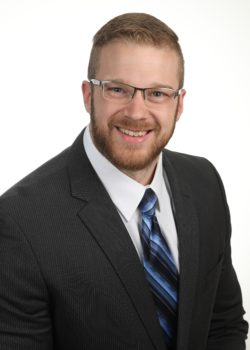The Cares Act SBA Provisions
The Coronavirus Aid, Relief and Economic Security Act (CARES) is an extensive stimulus package. This article will focus on the Paycheck Protection Program (PPP)(CARES Section 1102), the loan forgiveness on PPP loans (CARES Section 1106), expanded eligibility for Economic Injury Disaster Loans (EIDL) loans and the EIDL grant program (CARES Section 1110), and the subsidy for existing U.S. Small Business Administration (SBA) loans (CARES Section 1112).
The SBA has historically provided support for small businesses by offering guarantees for small business loans financed through the banking sector, and offering disaster relief loans, known as EIDLs, financed directly by the SBA. While the SBA will continue to offer financing support through these programs, the passage of the CARES act will provide additional financing options for disaster relief by establishing the PPP (CARES Section 1102), providing for loan forgiveness on Paycheck Protection Program loans (CARES Section 1106), expanding eligibility for EIDL loans and establishing a EIDL grant program (CARES Section 1110), and providing for 6 month payment subsidies on existing SBA loans (CARES Section 1112).
EIDLs were available for COVID-19 recovery prior to the CARES act, and seven billion of additional funding was made available to this program on March 12, 2020 to assist with COVID-19 response efforts. However, the availability of funds is anticipated to increase substantially upon the passage of the CARES act. Instead of being directly financed by the SBA like a traditional EIDL, they will be an expansion of the loan guarantee program already in place and will allow the banking sector to offer guaranteed loans for COVID-19 relief. This portion of the CARES act is being referred to as the PPP.
The CARES act guarantee program is also significant because it contains provisions for the forgiveness of loan amounts equal to payroll costs, interest payments on mortgages, rent payments, and utility payments between February 15 and June 30, 2020.
Borrowers interested in financing under the CARES act should contact their lender to discuss next steps, but understand that this legislation is still new and guidance is limited. The North Dakota and Minnesota Departments of Commerce are reviewing laws as they are changing and are updating their websites as more detailed implementation guidance becomes available. Please see the following for additional information:
Minnesota Chamber of Commerce Guidance
While the situation is still evolving, the PPP loans are anticipated to differ from the traditional EIDL in the following ways, though this list is not exhaustive:
- The PPP is a loan guarantee program, while loans made under the EIDL were direct borrowings from the SBA. This means that borrowers will work with local lenders for PPP loans, while they worked directly with the SBA for traditional EIDL loans. The SBA is offering a 100% guarantee rate to local banks for loans made under this program, so banks will not carry any risk of default.
- The PPP has a maximum loan amount of $10 million compared to $2 million for the traditional EIDL, though it is anticipated the majority of PPP loans will be smaller than $10million as they will be limited to amounts needed to cover payroll and related costs. In addition, the traditional EIDL loan carries a statutory interest rate of 3.75% for small businesses and 2.75% for non-profits, while the PPP loan interest rate will be determined by the local lender with a maximum rate of 4.00%.
- Traditional SBA guaranteed loans required the lender to determine whether the borrower has the ability to obtain some or all of the requested loan funds from alternative sources. This requirement is waived for loan guarantees made under the PPP.
- There is no personal guarantee or collateral required for loans made under the PPP.
- Lenders defer fees, principal, and interest for no less than 6 months and no more than 1 year for loans made under the PPP.
- SBA will not charge fees to the borrower and lender for loans made under the PPP.
- The employer must certify that the loan will be used to retain workers, maintain payroll, make mortgage or lease payments, and pay utilities.
Section 1102 defines eligibility for PPP loans as any of the following with not more than 500 employees, or the industry size standard provided by SBA, if higher.
- a small business
- Sole-proprietors, independent contractors, and other self-employed individuals
- 501(c)(3) nonprofit
- 501(c)(19) veteran’s organization
- Tribal business concern described in section 31(b)(2)(C) of the Small Business Act
To streamline the application process, Section 1102 does not require lenders to determine repayment ability. Instead lenders are to determine whether a business was operational on February 15, 2020 and had employees for whom it paid salaries and payroll taxes, or a paid independent contractor. To further streamline the application process, collateral and personal guarantee requirements are waived, as well as the credit elsewhere test. Instead, borrowers will be required to make a good faith certification that the loan is necessary due to the uncertainty caused by COVID-19, that they will use the funds to retain workers and maintain payroll, lease, and utility payments, and are not receiving funds for the same purpose from another SBA program.
The maximum loan amount is set at $10 million through December 31, 2020. The average loan size will likely be much smaller than the threshold, however, as a formula tied to payroll costs incurred by the business will be used to determine the size of the loan on an entity by entity basis. Loans can be used for employee salaries, paid sick/medical leave, employee insurance premiums, and mortgage, rent and utility payments. Note that borrowers can only apply for COVID-19 assistance from either the PPP program or the EIDL program, not both. However, borrowers who have taken out EIDL loans for non-COVID-19 assistance may have the option to roll their EIDL loan balance into their PPP financing. Section 1102 also waives SBA fees for borrowers and lenders, and provides processing fees to the lender from the SBA for servicing the loan. While borrowing rates are established by the lender, the SBA has set a maximum rate of 4% and also prevents any prepayment charges from being assessed against a borrower under this program. Payments on loans made under the PPP program will not be due for at least 6 months after initiation, and can be deferred up to a year, but not longer than a year.
The government guarantee of loans made for the PPP will increase to 100 percent through December 31, 2020. Any portion of a loan that is not forgiven (see discussion on Section 1106) will have a maturity of not more than 10 years with a maximum interest rate of 4%, and the 100 percent guarantee for that portion of the loan will remain intact.
The PPP loans are significant as they have the potential to qualify for loan forgiveness under CARES Section 1106. Borrowers are eligible for loan forgiveness equal to the amount spent by the borrower during an 8-week period after the origination date of the loan on payroll costs, interest payments on any mortgage incurred prior to February 15, 2020, payment of rent on any lease in force prior to February 15, 2020, and payment on any utility for which service began before February 15, 2020. However, amounts forgiven may not exceed the principal amount of the loan and do not include costs for compensation above $100,000 annually.
Borrowers will provide documentation to the lender of qualifying amounts paid during the 8-week period. Upon receipt the lender will submit documentation to the SBA of an expected loan forgiveness amount and the SBA will purchase that amount of the loan from the lender. Importantly, debt forgiven through this process will not be included in the borrower’s taxable income. Any amounts not forgiven after one year will be carried forward as a loan under the guidelines laid out in Section 1102 above (max 10 year term, max 4% interest) and is 100% guaranteed by the SBA against default.
The amount forgiven will be reduced proportionally if the borrower reduces employment compared to the prior year, or if the borrow reduces salaries and wages by more than 25%. To encourage employers to rehire any employees who have already been laid off due to the COVID-19 crisis, borrowers that re-hire workers previously laid off will not be penalized for having a reduced payroll at the beginning of the period.
In addition to adding PPP and loan forgiveness provisions, the CARES act also expands eligibility for Economic Injury Disaster Loans (EIDL) to include the following with fewer than 500 employees (CARES act Section 1110):
- Tribal businesses,
- Cooperatives, and ESOPs
- Sole proprietor or an independent contractor
- Private non-profits
In order to facilitate ease of financing, the SBA shall waive any personal guarantee on advances and loans below $200,000 (was $25,000), the requirement that an applicant needs to have been in business for the 1-year period before the disaster, and the credit elsewhere requirement for any SBA EIDL loans made in response to COVID-19 before December 31, 2020. The SBA will approve and offer EIDL loans based solely on an applicant’s credit score, or use an alternative appropriate alternative method for determining applicant’s ability to repay.
Eligible entities who have applied for an EIDL loan due to COVID-19 are allowed to request an advance on that loan of not more than $10,000, which the SBA must distribute within 3 days. These advance payments will not be required to be repaid, even if the entity is subsequently denied for an EIDL loan. In order to qualify for the advance payment, the borrower must certify under penalty of perjury that they are eligible for an EIDL loan. The advance payment may be used for providing paid sick leave to employees, maintaining payroll, meeting increased costs to obtain materials, making rent or mortgage payments, and repaying obligations that cannot be met due to revenue losses. These grants are only available for loans made through December 30, 2020.
The CARES act also offers assistance to existing SBA borrowers. Under Section 1112, the SBA will pay the principal, interest, and any associated fees that are owed on existing 7(a), 504, or microloans for a six month period starting on the next payment due. PPP loans are not eligible for this subsidy. Loans that are already on deferment will receive six months of payment by the SBA beginning with the first payment after the deferral period. Loans made up until six months after enactment will also receive a full 6 months of loan payments by the SBA.
Requires SBA to encourage lenders to provide deferments and allows lenders, up until one year after enactment, to extend the maturity of SBA loans in deferment beyond existing statutory limits.
The SBA will be offering guidance to lenders and borrowers in the coming weeks on the CARES act, much of which will clarify the lending and forgiveness process. In the meantime, if there are any questions, please feel free to reach out.
Contact Our Team
Scott Hasbrouck
Shareholder
Email: scott.hasbrouck@bradymartz.com
Phone: 701-775-4685
Grand Forks, ND
Jordan Rodgers
Senior Manager
Email: jordan.rodgers@bradymartz.com
Phone: 701-852-0196
Minot, ND






